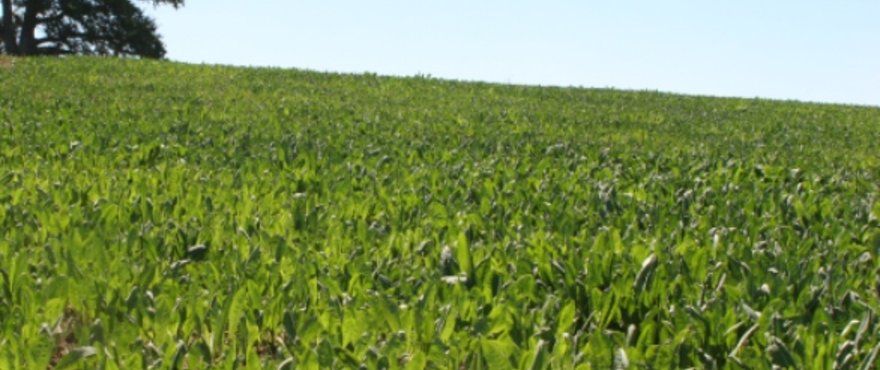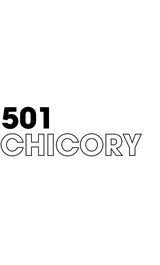Rapid establishment
501 Chicory establishes very quickly, meaning less down time before the first grazing. In trials and on-farm across a wide range of different soil types 501 Chicory growth has stood out right from the start, particularly in dry conditions.
Excellent DM yield
501 Chicory’s extra yield is predicted to produce an extra 7% kg MS, giving an additional income of $413/ha (based on $8.25/kg MS) over some other chicorys.
Modelled Chicory MS production (Relative to trial mean = 100).
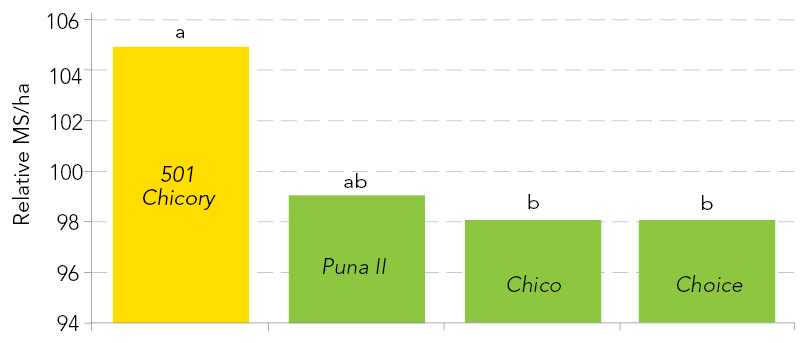
Data based on yield info from the combined trial analysis of Cambridge 11-12, and Canterbury 12-13. 2 trial lines have been removed from the graph. Assumptions used were: ME of chicory is 12 MJ ME/kg DM and 132 MJ ME to produce 1kg MS.
Clean feed for young animals
501 Chicory helps manage parasites in young animals. Its open, upright habit greatly reduces worm numbers, and it puts weight on finishing stock faster, so you can quit them sooner. That means fewer drenches, and less exposure to parasites.
Advantage of 501 + Morrow
The combination of 501 + Morrow red clover or 501 + Zulu II arrowleaf clover performs well. Like 501, these clovers are deep rooted giving them a significant advantage in summer dry conditions. They also fix nitrogen reducing fertiliser requirements for the crop and subsequent pasture.
High ME
Chicory, red clover and arrowleaf clover are highly palatable to animals and are all high in ME. During summer dry conditions, they will maintain an ME of around 12, whereas ryegrass pastures generally maintain an ME of 9-10.5.
Management
Sow chicory into a fine, weed-free seed bed where soil temperatures are consistently above 12°C in spring. Roll before and after sowing for uniform germination. Graze when plants reach the seven leaf stage. Targets for grazing are:
- Pre-grazing targets: 3000 kg DM/ha or 25-35 cm height.
- Post-grazing residual target: 5 cm.
Environmental gains
501 Chicory offers a range of important environmental benefits:
- Its deep tap root (up to 1.5 m) improves soil structure;
- It mines deep soil N and can recover excess soil N left after winter-grazed crops;
- It doesn’t need insecticide sprays (unlike brassica crops);
- It reduces the N load in the urine patch the same way plantain does. Research shows cows grazing chicory have substantially lower urinary N concentrations, even more than those recorded for cows grazing plantain;
- Facial eczema spores are much lower than on ryegrass pastures.
How many ha?
For dairy farms, sow 3 ha of 501 Chicory per 100 cows to provide 3 kg DM of chicory/cow/day. Area to be sown can be calculated from the following table:

When to resow pasture
501 Chicory will look great going into autumn. Despite this, it is more important to get new pasture established early, rather than continue to graze chicory into late autumn.
Sowing 501 Chicory
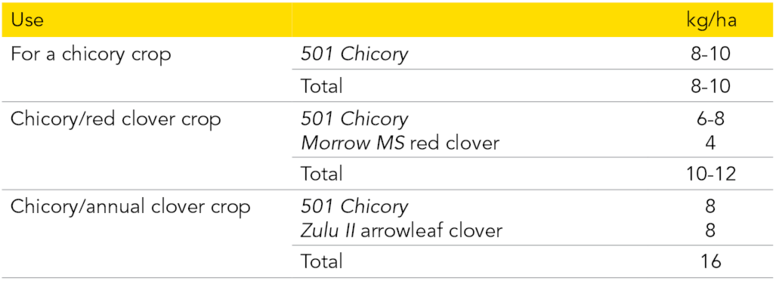
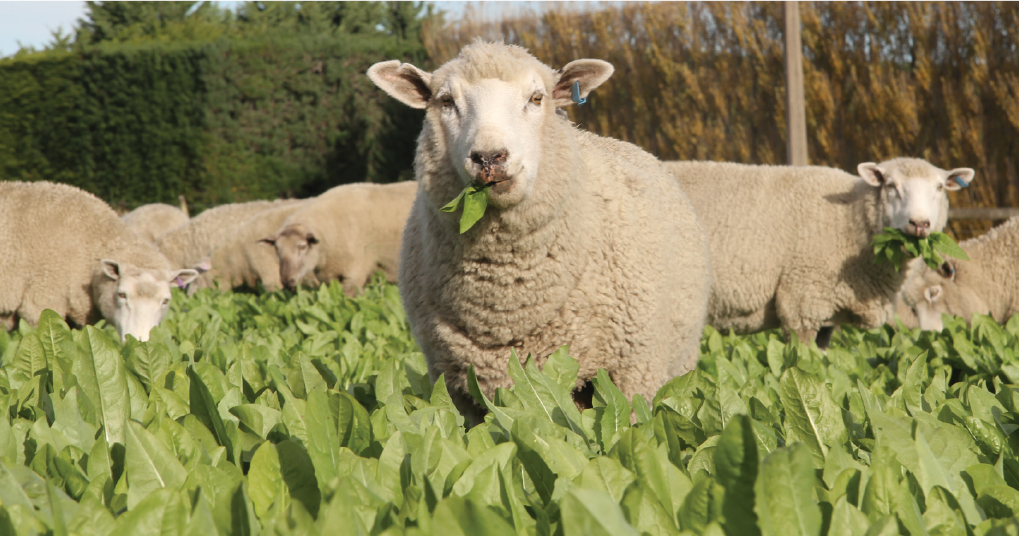
501 Chicory is owned and marketed by Barenbrug


